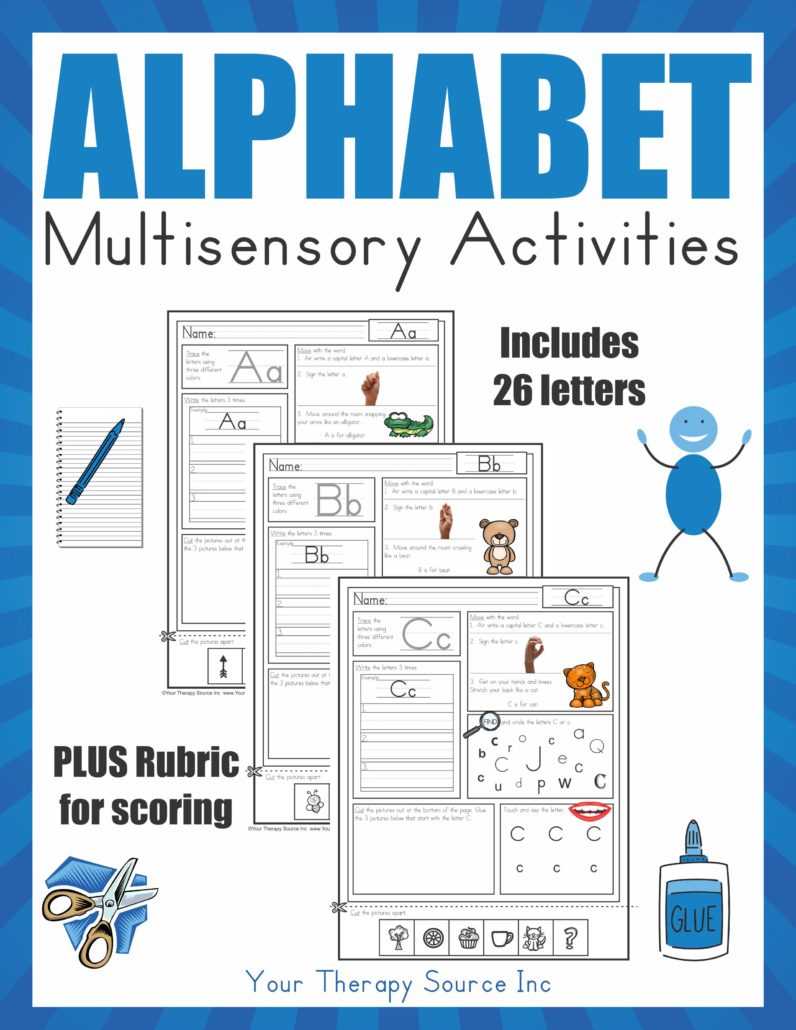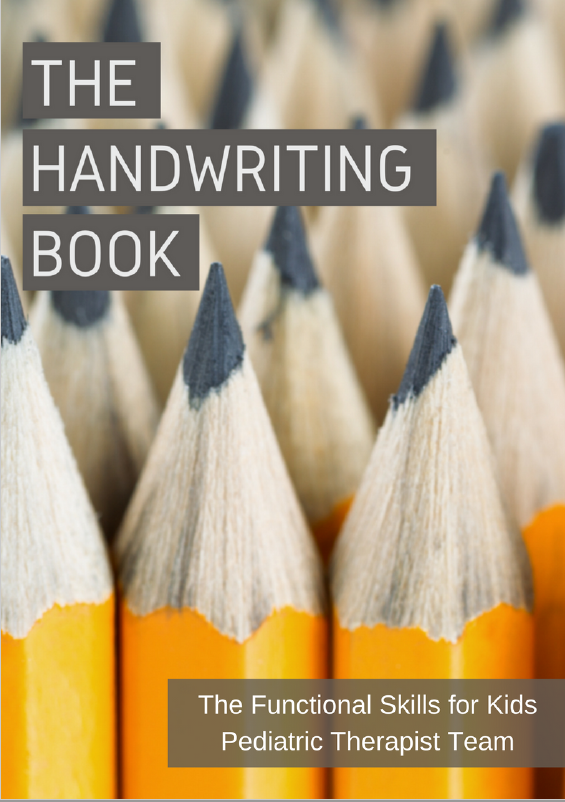Multisensory Handwriting Practice

Teaching handwriting is a complex process. It is not just about completing penmanship practice with pencil and paper. There are many components to the skill of handwriting that must be considered. When students participate in multisensory handwriting exercises, these various components can be practiced.
What is Multisensory Handwriting?
Multisensory handwriting includes all the various aspects of what the body and mind needs to do to form letters. Yes, handwriting is a complete mind body experience! Sounds like an exaggeration right? In actuality, handwriting does involve the whole mind and body – even down to the feet! There are different components to handwriting.
Fine Motor Skills and Handwriting
Of course, the fingers and hands have to hold the pencil in order to make marks on the paper. This one is the most obvious component of handwriting.
Visual System
Another obvious sensory component of handwriting is the visual system. Many different visual perceptual skills are involved in handwriting:
- visual discrimination skills – recognizing the different shapes and sizes that form the letters
- form constancy – the understanding that a letter stays the same even when it changes it size or position. For example, when you see the letter ‘A’ it is always the letter ‘A’ whether in a word, in bigger text or different font – Cat or CAT.
- visual motor skills – eye hand coordination working together to form the letters
- visual memory – remembering what the letter looks like to you can write it.
- visual spatial skills – how far apart the letters and words are spaced and writing the letters on the line.
- visual closure skills – writing the complete letter
- visual tracking – moving along the paper to check your letter formation

Interactive Multisensory Alphabet Activities – Google Slides or Powerpoint
Auditory System
Students need to associate what a letter sounds like when they hear and say the letter to help with spelling and handwriting fluency.
Tactile System
Children need to touch the pencil and paper to form the letters. Their brains receive feedback up the sensory pathways that tells the student what the pencil and paper feel like.
Proprioceptive System and Multisensory Handwriting
The joints and muscles need to provide information on how much pressure to put on the writing utensil and how much the muscles should respond to move the fingers on the writing utensil and hand/shoulder complex along the paper.
Orthographic Processing in the Brain
Orthographic processing is the ability to understand and recognize writing components such as spelling, capitalization, and punctuation. Students with weak orthographic processing rely very heavily on sounding out common words that should be in memory, which can result in deficiencies in decoding skills and written expression. In addition, there can be difficulties with letter recognition and letter reversals. If a student does not have the visual memory skills to recognize the shape and orientation of a letter, they are more likely to make reversal errors.
Gross Motor Skills and Multisensory Handwriting
Gross motor skills are the larger movements that the body makes. The gross motor skills involved in handwriting mainly refer to the postural control that is required for writing. Efficient control of the larger muscle groups in the neck, shoulder and trunk is necessary to maintain stability in order for the fingers and hands to move to complete the handwriting task. Even the feet play a role – it is difficult to have stable hips and posture if the feet are not positioned properly.
Motor Planning and Handwriting
Children also must develop the ability to plan and execute the actions required for handwriting. This motor planning requires muscle groups to work together with the proper force, timing and actions to produce an acceptable outcome (ie legible handwriting).

Multisensory Alphabet Activities
Vestibular System
The vestibular system in the inner ear helps to distinguish where to position the head, neck and trunk in order to maintain visual focus and an upright posture.

Why Is Multisensory Handwriting Practice Important?
Learning the letters and how to write them involves so much more than just pencil and paper. By completing multisensory handwriting practice, students are exposed to different parts of the skills that are all required to write letters.
Resources to Help Get You Started
Need help with multisensory handwriting ideas? Check out these resources:
Check out all of these themed handwriting worksheets that are ready to print and use. No planning or prep time needed.
Each digital download includes movement, “rainbow” writing, handwriting practice, visual discrimination practice, scissor skills and pasting. Each title also includes a scoring rubric to track progress.
Multisensory Alphabet Activities
Winter Multisensory Handwriting Activities
Valentine’s Day Multisensory Handwriting Activities
Spring Multisensory Handwriting Activities
Summer Multisensory Handwriting Activities
Fall Multisensory Handwriting Activities
Halloween Multisensory Handwriting Activities
Thanksgiving Multisensory Handwriting Activities
December Multisensory Handwriting Activities
Want to Learn Even More About Handwriting?
The Handwriting Book is designed to be an effective, easy-to-use resource for any parent, educator, or therapist. Ideas for activities, strategies, modifications, and adaptations for children of all ages are included alongside explanations of each aspect of handwriting. Each chapter includes helpful therapist tips to make handwriting practice more engaging and fun.



